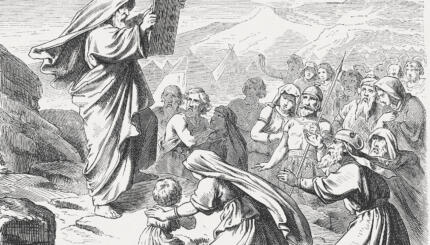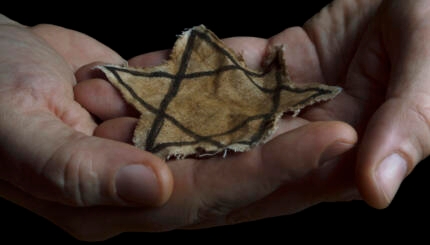In last week’s Forward, Jay Michaelson entered the Peoplehood debate with force, simultaneously acknowledging his own sense of connection to Jews worldwide and summarily dismissing the notion of Jewish Peoplehood as “vacuous” and “banal.”
Jay begins his article by asserting that in pre-modern times, Jews felt part of klal yisrael, the congregation of Israel, because they had to: “all of us knew that we were Jews, and that, thanks to external forces of discrimination and marginalization, we were responsible for one another.”
Then came emancipation, which allowed Jews to affiliate with specific parts of Jewish life (culture, religion, community) or not at all.
Here Jay takes an interesting turn.
Enter “peoplehood,� the latest effort by Jewish elites to find common ground among secular Israelis and Hasidim in Brooklyn, Jews-by-ethnicity from the former Soviet Union and “cultural Jews� in Europe.
First, while I agree that the notion of Peoplehood has taken a hit in recent centuries, I think its coffin has yet to be nailed shut. While it may have weakened in recent years, Jewish support for Israel is still incredibly strong, and the last 30 years have seen the success of the Soviet Jewry movement and the relocation of Ethiopian Jewry via Operation Moses and Operation Solomon.
But equally important, while there’s been much debate about Jewish Peoplehood over the last couple of years, this is the first time I’ve seen it described as the invention of “Jewish elites.”
Jay goes on to poke holes in the concept of Jewish Peoplehood, many of which I agree with, but his tone and conclusions seem influenced by this early assertion. And aside for its perhaps-unjustified cynicism, I’m just not sure its true. I’ve seen no evidence that “Jewish elites” are trying to forge a new sense of Peoplehood that drastically deviates from the original concept of klal yisrael.
Additionally, wasn’t klal yisrael always something of an artificial construct? Aren’t all “nations” and “peoples”? In the words of scholar Benedict Anderson:
all communities larger than primordial villages of face-to-face contact (and perhaps even these) are imagined. Communities are to be distinguished, not by their falsity/genuineness, but by the style in which they are imagined.
And so the pre/post-emancipation yes/no-Peoplehood dichotomy is problematic.
So peoplehood unites, and captures the vague emotional attachments many of us have to Judaism and to our fellow Jews. But does it do anything? … Peoplehood is so vacant, it’s vacuous.
But Peoplehood was always vacant — at least, essentially so. Jay’s article is entitled “There’s No There There” — but there never was. Jews imagined a “There” — a connection to Jews on the other side of the world who they had very little in common with.
Of course, Jay may respond that this makes no difference if Jews today have no interest in continuing to imagine this sense of connection. But (1) I’m not sure this connective tissue has been totally severed yet (again, see the continued attachment of Jews to Israel); and (2) I think there may, indeed, be benefits to this transnational imagined community — benefits that affiliated and unaffiliated Jews can appreciate.
Perhaps just as local Jewish communities serve as models and petri dishes for local social meaning and responsibility, so to a sense of global Jewish connectivity could serve a similar function for our — and this is banal, but no less true — increasingly globalized world.


